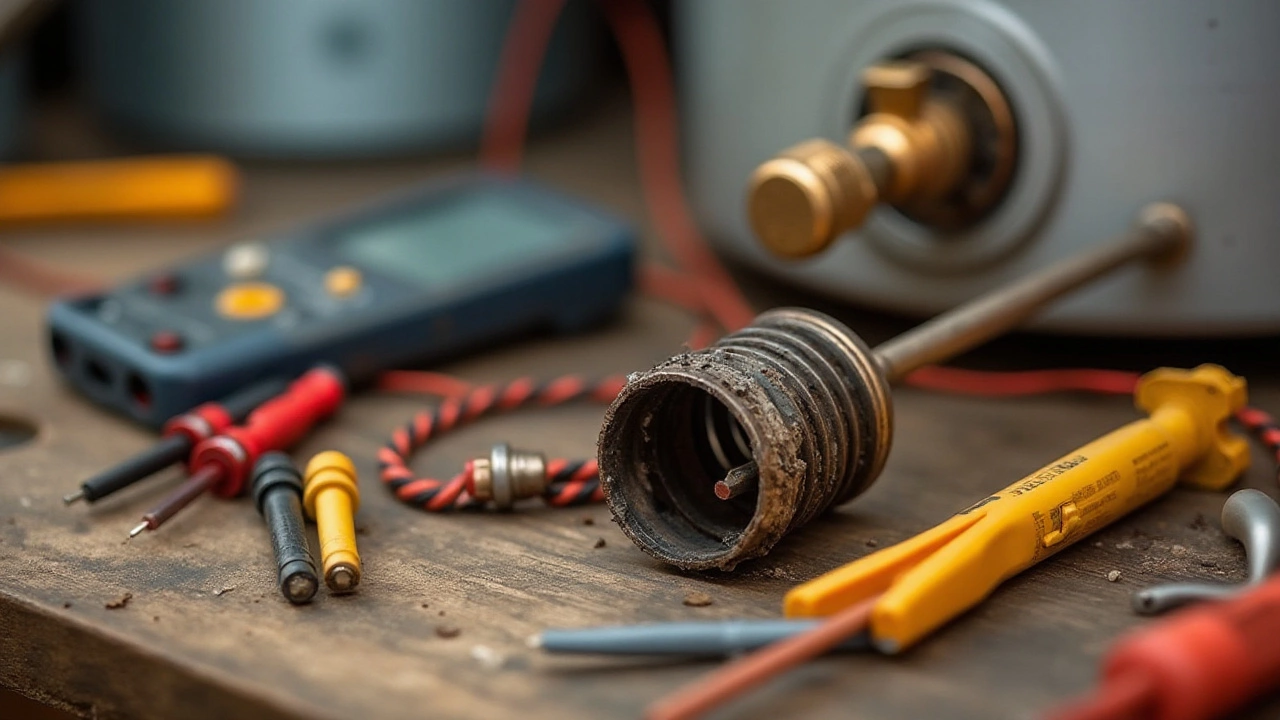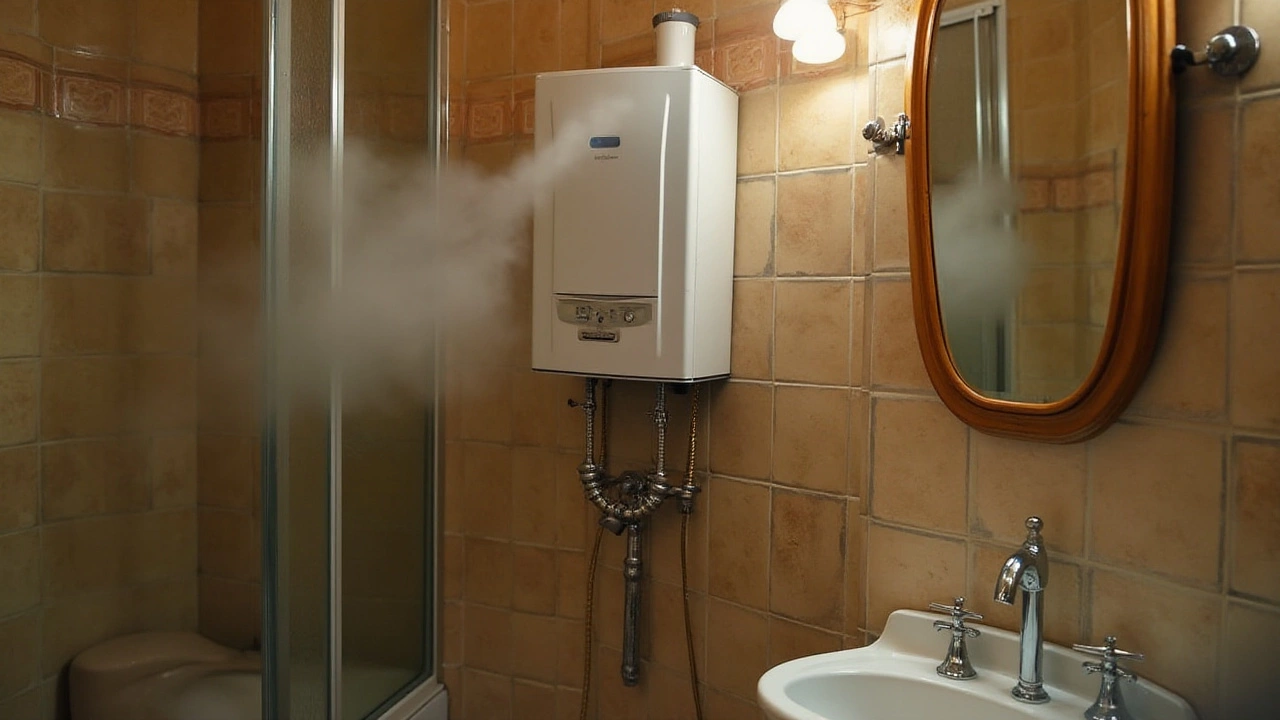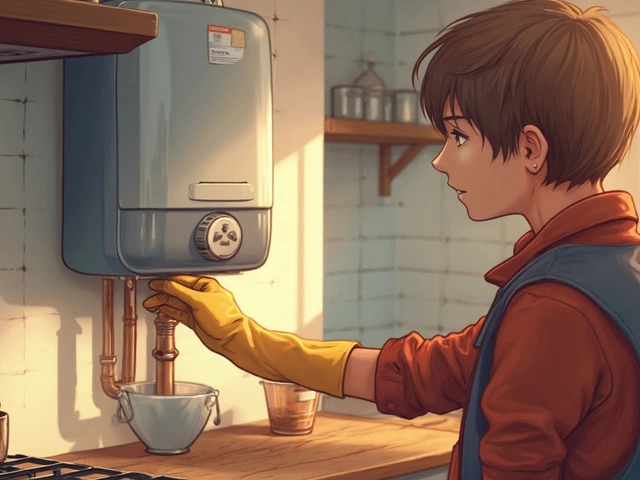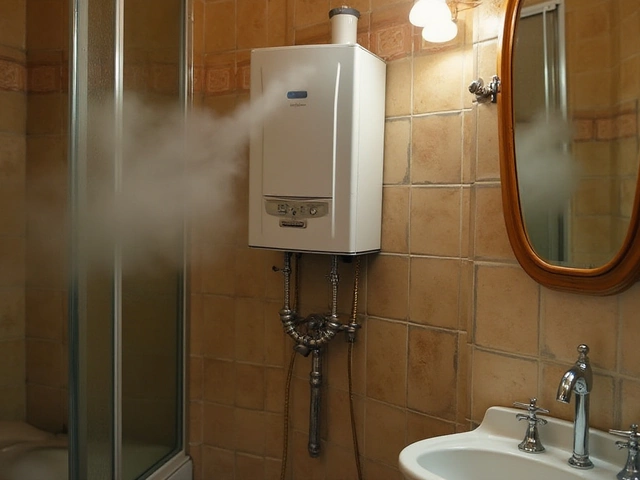Picture this: it's a crisp winter morning and you're craving the steamy embrace of a soothing shower. But to your dismay, the water cascading around you is lukewarm at best. This can be a telltale sign that your hot water heater is misbehaving, with the likely culprit being a finicky heating element.
Understanding how your water heater operates can arm you with the knowledge to address these chilly challenges head-on. Various problems may indicate a failing heating element, from strange noises emanating from the tank to roller-coaster water temperatures that can't seem to make up their mind. You might even notice your wallet feeling lighter, with sudden spikes in your energy bill.
In this article, we'll guide you through the process of identifying a bad hot water heater element, provide insights on how to assess the situation, and offer tips to either fix it yourself or determine when it's time to call in a professional. Look no further as we delve into the warmth of water heater wisdom!
- Understanding Your Water Heater
- Common Symptoms of a Bad Element
- Diagnosing and Testing the Element
- Repairing or Replacing the Faulty Element
- Prevention and Maintenance Tips
Understanding Your Water Heater
Your water heater is the unsung hero in your home, tirelessly working behind the scenes to deliver steaming hot water at just the turn of a faucet. To appreciate its value, it's essential to learn a bit about how this appliance functions. The typical hot water heater consists of a tank, generally made from steel, lined with a protective coating to prevent rust and deterioration. Within this tank lives the mighty heating element, the crucial component that raises water temperature to your desired level. While most residential water heaters operate with electricity, others might rely on gas or alternative sources of energy.
At the heart of an electric water heater, you'll usually find two distinct heating elements, each equipped with its own thermostat. The upper element's primary role is to facilitate a quick recovery of hot water availability after use, while the lower one maintains overall water temperature. Hot water exits through a pipe leading to your fixtures upon demand. Meanwhile, cold water from your plumbing pipes is continuously fed into the tank via a dip tube. It's a seamless dance of temperature management carefully coordinated within your appliance.
Water heaters are often set to maintain a temperature of about 120 degrees Fahrenheit, ensuring efficiency and scald-free safety. However, problems occur when these temperature settings veer off course – a phenomenon sometimes exacerbated by sediment build-up within the tank. According to the U.S. Department of Energy, 'By regularly flushing your water heater, you can extend its life and improve efficiency' (
U.S. Department of Energy), illustrating how a little maintenance can go a long way in keeping the heater running smoothly.
It could be helpful to know about the plethora of designs available when choosing a water heater. Traditional tank-style heaters offer reliability, though modern tankless or on-demand models promise an endless supply of hot water without the constraints of a storage tank. While initial costs are higher for tankless systems, they tend to be more energy-efficient, leading to lower utility bills over time. By embracing advancements in technology, homeowners can equip their households with water heaters that best suit their needs and preferences.
To truly get to the root of problems such as an inconsistency in hot water generation, one must dive deep into the components and workings of a water heater. Doing so prepares you for identifying whether it's time for a quick diagnostic check or enlisting the help of a professional. Familiarity with its design and function not only empowers you but ensures the comfort delivered by heated water in your home endures.
Common Symptoms of a Bad Element
When greeted by an unexpected splash of cold water, the first thing one might suspect is a faulty heating element. But how exactly can you tell if this is indeed the root of the issue? There are several telltale signs that suggest your water heater might be suffering from a faulty element, and knowing these can save you time and unnecessary discomfort. One significant and immediate change you might notice is a decrease in water temperature. If you're accustomed to a reliable gush of hot water, a sudden drop in temperature is often the first red flag. This inconsistency may be sporadic at first, but it generally worsens as the element deteriorates.
The electricity bill can also provide clues. If you find yourself facing inexplicable hikes in your energy costs, your hot water heater could be the hidden culprit. A bad heating element makes your water heater work overtime, leading to a noticeable increase in your monthly bill. Such inefficiencies often slip under the radar, leaving homeowners puzzled. In some cases, you might even hear peculiar noises emanating from the tank. These noises, often described as popping or cracking, result from the hot water heater element developing mineral deposits over time and struggling to operate effectively.
According to Energy.gov, "Proper maintenance and attention to detail can extend the life of hot water heaters, reducing unexpected failures of components like the heating element."If left unchecked, the symptoms only intensify over time. The element starts losing its capacity to heat water properly, which might eventually lead to complete predisposition or burnout. Recognizing these symptoms can go a long way in tackling the problem head-on, as early detection often prevents the need for more severe and costly repairs. Physical signs, such as water seeping from the tank, might also suggest a poorly operating element. This can happen when a worn element alters the pressure within the tank, causing a leak.
In rare cases, you might notice a metallic or burnt smell near the water heater, hinting at an internal issue. Taking the time to periodically check for these symptoms can save you from unexpected showers and, importantly, significantly prolong the lifespan of your water heater. By keeping an eye and ear out for these signs, you'll be better equipped to deal with common issues and maintain a cozy temperature within your home.

Diagnosing and Testing the Element
When your trusty hot water heater decides to take an unscheduled break, diagnosing the issue accurately is crucial. The process of identifying a faulty element begins with a thorough inspection, armed with some basic tools and a keen observational eye. Start by shutting off the power supply to ensure safety; after all, electricity and water don't exactly play well together. Once the power is off, you can remove the access panels to get a closer look at the inner workings of your water heater.
A multimeter will be your best friend in this quest. A multimeter measures electrical resistance and will reveal how well your water heater element is performing. Set it to the lowest ohms setting and place its probes on the terminal screws of the element. If the meter reads anything from 10 to 30 ohms, your element is functioning. However, if it reads zero or doesn't budge from infinity, your electric element is calling it quits.
It's also a good idea to keep an ear out for any peculiar noises. A working water heater should be relatively silent, but a tell-tale sign of a compromised element is sputtering or hissing sounds. These noises often indicate sediment build-up, causing the element to overwork and eventually burn out. As Consumer Reports notes, "Regular maintenance, such as flushing the tank annually, helps prevent sediment accumulation."
If you're feeling particularly detective-like, rust or corrosion around the terminals can also give you a clue about the element's health. Visible physical damage like obvious burns or broken wires might also point to replacement as your best bet. Remember: a failing hot water heater element often impacts energy efficiency, so a sudden spike in electricity bills can serve as a major red flag.
Once you're ready to take on the challenge of replacing the faulty element, remember to take note of its specifications. These can typically be found on the side of the element or in the water heater's manual. Identifying the correct wattage and voltage ensures you select the appropriate replacement part. This way, you'll restore your prized steamy showers without the hiccup of inadequate performance down the line.
Lastly, diagnosing your heater doesn't have to be a solo mission. Don't hesitate to reach out to a professional if at any point you feel unsure about handling the repairs yourself. A licensed technician can provide insight and guidance, ensuring that your water heater remains safely operational for years to come. Keep these tips in mind, and you'll be well on your way to determining exactly what's troubling your water heater.
Repairing or Replacing the Faulty Element
Once you've reached the conclusion that your hot water heater issues stem from a faulty element, it's time to roll up your sleeves and address the problem. Repairing or replacing the element may seem daunting, but with a bit of know-how, it's a task many can tackle. The first step is to ensure your safety by cutting off the power supply. This typically means switching off the circuit breaker, and it’s always a good idea to double-check with a voltage tester to ensure no current remains.
Once the power is safely off, you’ll need to access the heating element. This usually involves removing a panel on the side of your heater. Be prepared to drain some water from the tank, especially if your heater has both upper and lower elements, as it helps to reduce the pressure and avoid spillage. Draining can be done by attaching a garden hose to the drain valve and directing it to a floor drain or outside your home. With the water level lowered, you can unscrew the element using an element wrench or a large socket.
When examining the removed element, look for visible signs of wear or damage, such as significant build-up of mineral deposits, corrosion, or a break in the metal. If the element is beyond salvation, replacement is your next step. Take the old element to your local hardware store to ensure you purchase a matching one in terms of voltage and wattage. For installation, simply reverse the removal process, ensuring a tight fit but taking care not to overtighten, as this can cause damage.
"Safely replacing a water heater element can save homeowners hundreds in repair costs," advises Dale Madson, a seasoned plumbing expert and author.
Before reattaching any panels and fully refilling the tank, confirm the thermostat settings to ensure they align with your desired hot water temperature, generally around 120°F is advised for efficient energy use. Finally, restore power and test the system by running hot water through your taps and checking for efficiency improvements.
In the event of recurring issues or if you're unsure about handling this process, contacting a professional is always a prudent option. They can provide further insights into potential problems that might not be apparent at first glance, ensuring your home stays warm and your water flows hot without disruptions. By staying informed and proactive, you'll be prepared to handle or prevent most issues related to your water heater, offering you peace of mind and uninterrupted cozy showers.

Prevention and Maintenance Tips
Preventive measures are the unsung heroes of longevity when it comes to your trusty water heater. Just as a well-oiled engine ensures a car’s smooth ride, consistent maintenance of your water heater can save you from unexpected bouts of cold showers and expensive repairs. It's no secret that caring for your unit extends its life and sustains its performance, so let's dive into how best to nurse this essential home appliance.
Start with scheduling regular inspections. It's wise to check your water heater every six months for any signs of wear and tear. If attending to minor details feels daunting, just think of this as an excuse to honor the diligence your future self will thank you for. During your checks, scrutinize the unit for potential leaks or corrosion, especially around valves and fittings. While examining the heater, dust off the outer surface of the tank and ensure the ventilation is clear of any debris or obstruction.
An extra layer of protection comes by installing a water softener, especially in regions where hard water is the norm but consult with a professional to see if it's right for your setup. Hard water accelerates the formation of mineral deposits, which can sabotage your heater's efficiency by coating the heating element. To combat this, flushing out your tank once a year could work wonders in clearing sediments that have snuck into the nooks and crannies. This simple act, involving turning off your unit, attaching a hose to the drain valve, and letting water flush through, can significantly preserve its lifespan.
Routine thermostat checks should not be overlooked either. Keep your thermostat set at a cozy 120 degrees Fahrenheit, ensuring energy efficiency without compromising on hot water relief. As many owners have discovered, unnecessarily high settings waste energy and increase the wear on your appliance. If you're not convinced, consider this insight:
"Regular maintenance and correct thermostat settings are key foundations for your water heater’s optimal performance," advises the Energy Saving Trust.
If your budget allows, it might be strategic to invest in an insulated water heater blanket, which curtails heat loss and can reduce your energy bills by as much as 16%. Hire a professional to wrap it snugly around your heater, leaving valves, controls, and access panels free. Additionally, if you haven't already, contemplate insulating your unit's water piping to retain valuable heat. Such straightforward yet effective measures can keep your unit humming happily along without straining your budget.
Remember this: close tabs on your earthly appliances pay off. Not only do these preventive steps stave off premature replacements, but they also help seize disasters before they happen, ensuring your shower-time stays serenely warm. Armed with these know-hows, your water heater is less likely to pull an unexpected betrayal, keeping warm water flowing as expected for years to come.




